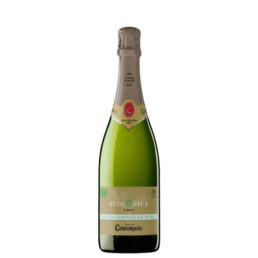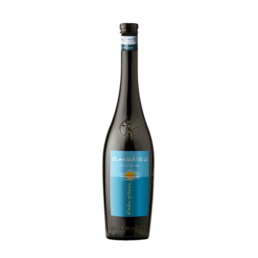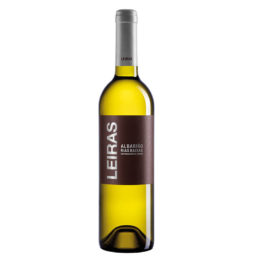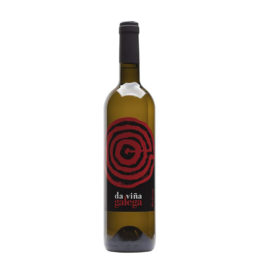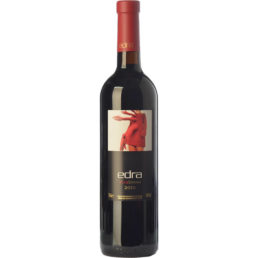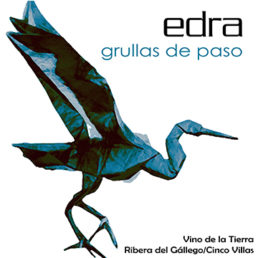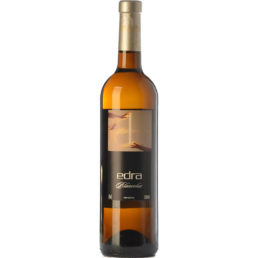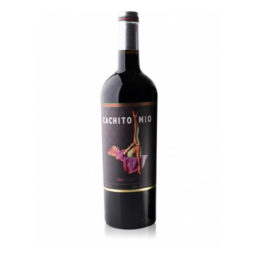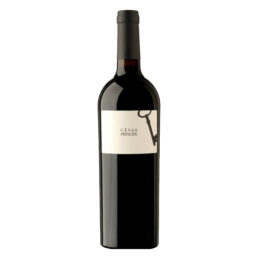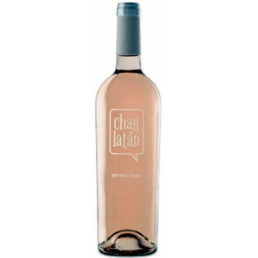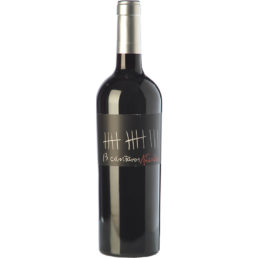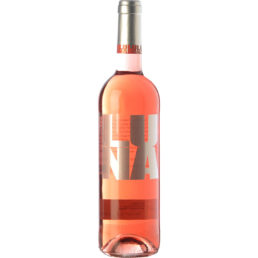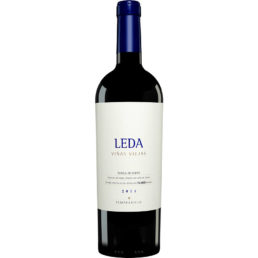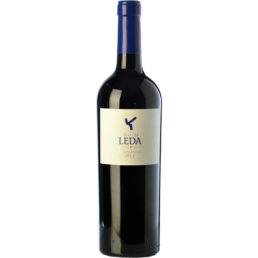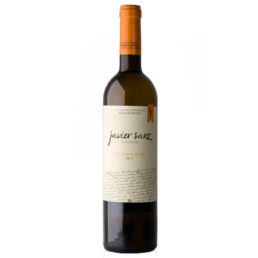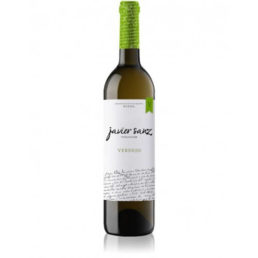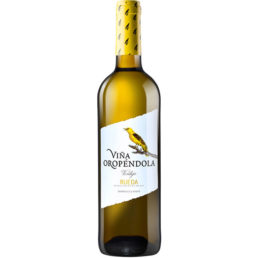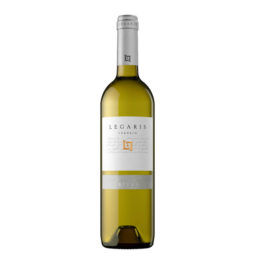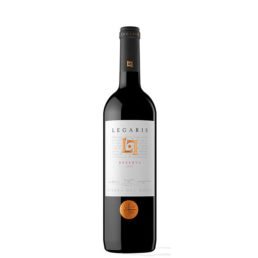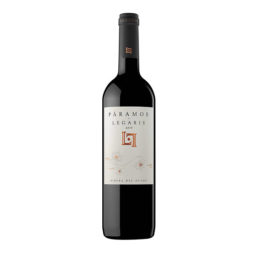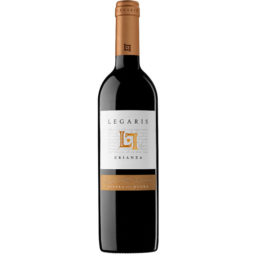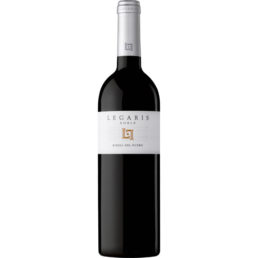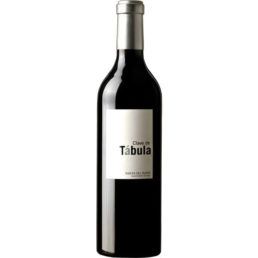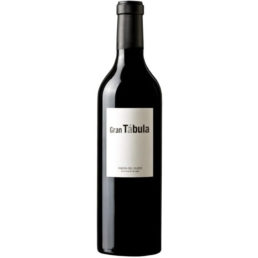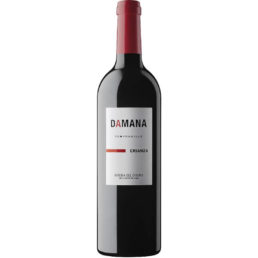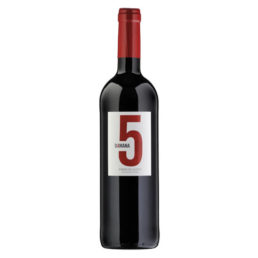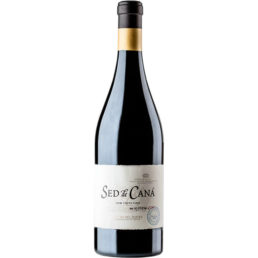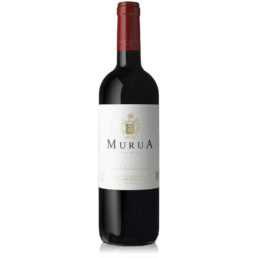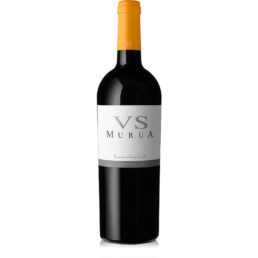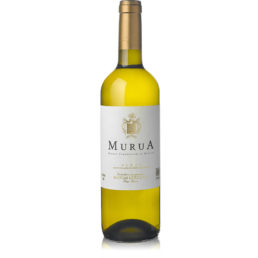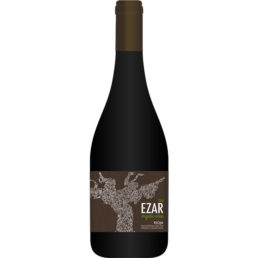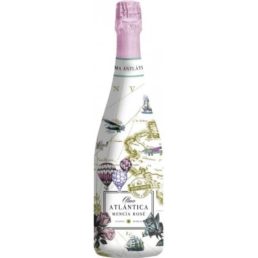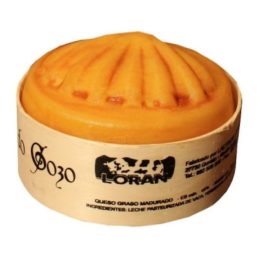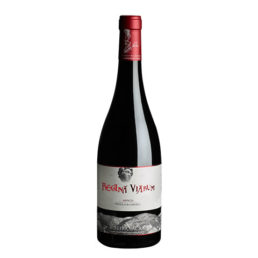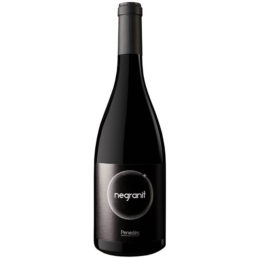2024
-
Cava Codorníu – Codorníu Ecológica Zero
Codorníu Ecológica Zero it is a delicious sparkling wine without alcohol obtained by desalcoholización, elaborated with autochthonous varieties of natural crop, of the best organic vineyards in the Penedès.DEVELOPMENT (VINIFICATION)To avoid any contact with the grape and wine, and eco-friendly with the rest of our production, we decided to gather these grapes on different days of the rest of our harvest. Based on selected wines, the spirit of Codorníu Green Zero is removed carefully by using an innovative system of vacuum distillation and low temperature with respect to the wine, minimizing the loss of its characteristics. The material used in the cellar was separated from the rest, and barrels of fermentation were especially marked. Both oenological products used along the development process as the various stages that are carried out guarantee the designation of ecological.PAIRINGVINEYARD (VITICULTURE)All the vineyards from which is born Codorníu Ecológica Zero have ECO certification (European Regulations) and NOP (National Organic Program, USA) and are located in the Alt Penedès (Parellada and Macabeo) and in the Central Penedès (Xarel lo). The low yields per hectare, guarantees the maximum quality of the grape (8.500-9.000 Kg/ha, the maximum allowed is 12.000 kg/ha).Codorníu Ecológica Zero is not only a perfect toast, but a great accompaniment to snacks, seafood, salads with fruit or flowers, fish and vegetables, crudités or desserts. -
We drink red wine 2015
Awards89 Points Guide AkataVino WineXtreme ed. 2017 -
White wine Flore de Carme Albariño
Preparation with a unique, Frore de Carme it is one of the albariños more exceptional. Its creator, Eladio Piñeiro, only produces this wine in the vintages that he considers. The wine is dense and full-bodied, with a good balance of fruit and alcohol, glyceric and with many nuances. All this supported by a great freshness and minerality. Their vines have an average age of more than 25 years old, bringing more of the five transition to biodynamics.The external image of Frore de Carme is as neat as its contents, highlighting the following aspects:• Label thermo-sensitive, that lets you know the optimal temperature of consumption.• Glass stopper airtight, tested in the united States and on the Rhine, that allows corkage manual. The system favors the evolution of wine, prevents oxidation and maintains the spectrum of floral and fruity Albariño, avoiding defects of cork and conjuring the contamination by TCA or anisoles.• Design of the bottle, which represents an amphora modern glass top quality.• Iconography, logos and bottle designed by Eladio Piñeiro and made by the artist Jaime Asensi.Awards 93 points guide Peñín -
White wine Amodiño
Amodiño Albariño it is a singular wine of slow fermentation whose subsequent aging is carried out with its own lees, with the of add earlier and the later. It is precisely this peculiarity which gives it a unique character and an evolution in the bottle, rich in nuances, through his long life.Under the warranty that offers a Designation of Origin Rias Baixas, the vineyards of this Amodiño Albariño are distributed in privileged areas within the varied orography of the Valley of the Salnés and Ribeira del Ulla. The harvest of the harvest of the year 2015 occurred during the last week of September and first of October, carrying out green pruning and a later selection in each plot as the clusters reached its maturity.After the selection of the clusters in the winery and subsequent maceration - a process that lasts between eight and ten hours - with the skins, its fermentation is spontaneous and takes place with their own indigenous yeasts at a low temperature and very long.It was aged on its fine lees, performing beating monthly in tank stainless for twelve months, to which he is joined by three months with the lees of the vintage previous (2014) and three with the rear (2016). Next, matured five months in cuba, and it was bottled under the iconography and the design of Eladio Piñeiro in December 2017. Your marketing begins already in march 2018.Piñeiro produces this Amodiño Albariño in their cellar Frore of Carme, space in which their wines acquire the exceptional conditions of soils of different zones of influence of the Estuary of Arousa.This 100% Albariño of skin maceration will provide any of your events a special touch and intense. As own of the galician land that is, a cup of Amodiño Albariño maridará perfectly with any tray of fresh seafood to happy lobster, mussels or crab, among other options. Also with fish such as cod, tuna or turbot will be an excellent idea, although for those that prefer to combine with meat products, it is recommended that you do with poultry.Also, pair with dishes with soft cheeses elaborated with milk of goat, with creamy risottos, or with pieces of sushi, for those of you that are regulars to the japanese food. -
White wine Envidia Cochina Albariño
Envidia Cochina - Tête de cuvée, occurs in soils with exceptional conditions, practicing a viticulture and the process of development unique. Our vineyards have an average age of more than 30 years old, carrying more than eight out of transition to the biodynamic.Packaging: Label that mimics a “clipping” of the press of an article on the Envy with a bullet, each add, the comic book bears the title the own brand of wine, creation of Eladio Piñeiro, design and realization Jaime Asensi.The vineyards are distributed in privileged areas within the varied orography of the Val do Salnés. The harvest of the harvest of the 2016 it was during the penultimate and last week of September. After the manual picking of the grapes in the vineyard and a further selection in the winery are macerated (8-10 hours), is done foot of cuba days before to assist the spontaneous fermentation with its own yeast, “wild”, fermented at a low temperature very long.After fermentation, of all the harvest, we selected the top of the vats of that vintage with more fruity (Tête de Cuvée). Have aging on its own fine lees from 6 months (performing beating weekly 3 first few months and monthly the 3 following), the blend final is the result of the assembly with a 15 % the add above (2015) intended to Frore of Carme (which, until that time, it was aged on its fine lees with beating monthly, during 1 year, more 3 months with the lees of the vintage following (2016), more other 3 months maturing in tank of stainless steel).Bottled, on day Flower, and started its marketing in the month of June 2017. -
Albariño white wine Leiras
In this white, produced in the Rias Baixas, to the Codorníu Group, you will find freshness, minerality and elegance, three qualities that define the wines in the subregion of Val do Salnés, from where come some of the best Albariños of the D. Or.Piles (farms in galician) it is a single variety of grape Albariño (100%). This wine pairs perfectly with fish, seafood, snacks, rice or pasta. Its structure allows also to accompany white meats or sausages. -
Galician white wine Albariño Daviña
Young white wine cellar Adegas Valdes fresh with fruity and citrus. -
Red wine Edra Xtra Syrah
Edra XtraSyrah 2014, variety of balanced year after year, with a freshness and ripe fruit as a response to the summer balanced 2014; powerful, with personality and smoothness at the same time. It offers intense and deep aromas of menthol because of the variety and toasted, roasted and chocolateblack, due to the terroir and the sunny Hoya de Huesca in the foothills of the pyrenees. Silky and with a long and honest aftertaste. The rest in French oak and a little american,with batonagge with their own lies, given the maturity and golosidad necessary.Vintage grape own, selection of plot, vintage manual 8 September.Fermentation maceration in cold chamber, delestage open and closed.Malolactic barrel French.Aging ”batonnage” with the addition of the lees 12 months in French oak selection andAmerican.Label the work of the artist Mª Pi Rivera -
Red wine Grullas Paso
In the municipality of La Hoya (Huesca),small winery Bodegas Edra made with IGP Ribera del Gallego - Cinco Villas, the wine Edra Grullas Paso, a red wine oak own vineyards located in the Pre-Pyrenees of Aragon.The blend is still a selection of Merlot, Cabernet Sauvignon, Tempranillo and Garnacha.Activities in the vineyard always develop in a respectful way with the environment, doing all the work manually without using chemicals or aggressive elements. The vineyards are surrounded by fields of legumes and alfalfa.Selected grapes are separately vinifica fermentations in stainless steel at a controlled temperature and delestages newspapers to extract maximum pigmentation and phenolic components of the skins. Red wine Edra Grullas Paso 2016 Ribera del Gallego makes raising 4 months in barrels of French and American oak which are made "batonnage" with addition of lees. the blend is made and bottled.The name of this wine, Step cranes, He wants to remember the presence in the vineyards of these migratory birds when they take a short break before resuming forces on their journey from north to south. -
White wine Edra BlancoLuz
ʱ??BlancoLuz", that makes lovers of white wine to have the pleasure at your fingertips. This vid, almost unknown in the vineyard Spanish, provides a wine, wine of good table, is made to the 100% with the variety Viognier white full-bodied with a texture that is too smooth. The attack evokes aromas of flowers very fine, as honeysuckle, rosemary and fresh fruits such as pineapple and apricot, evolving then to the pear sweet, and ending curiously enough in aromas intrísecos to our climate, as dried fruit and lightly toasted. It is also spicy and for its high maturity, fills the mouth of honey and sweet sensations. Perhaps the 2012 is the best add up to now, spectacular.There is a variety easy in your culture and has been crafted with care and maximum protection. Unknown in our area, for that reason it will be labeled as Table Wine. The vintage and the variety on the back.To move all the work done in the vineyard to your glass of wine, it is macerated in cold to extract all their treasures trapped in the skin of the grape and transferring them to the liquid gold, the must, with the care of a fermentation soft, are transformed into an explosion of sensory when it is about the wine to our senses. A small fraction is fermented in oak barrels, to achieve an unforgettable experience when you decide to try it. White fish and shellfish such as crab, lobster and scallops make their smoothness engolosine your mouth.The photo of the label, “Ne Timeas I”, it is the work of artist Mary Pi Rivera, huesca international recognition. -
Red wine Vineyards of Aromaz – Aromaz
Aromaz it is one of the last projects of the family Osborne-Osborne. Born in the heart of Castilla La Mancha, in the finca La Cañada, one of the most beautiful of the region.The grapes for the Aromaz come from a single payment called The Captain, the vineyard of the highest estate, with strains in the glass of more than 40 years resting on limestone based soils and stony. There the yields are very small and the quality very high, as certifies every sip of Aromaz.It is a red, fruity-packed with typicity and character. Of cover layer and cherry color, the spices and berries are dealt the role in a nose to be seductive. In the mouth it is kind and noble, of elegant touch and a good fruity. Juicy, balanced and long finish. -
Red wine Casa Maguila – Perhaps
The Casa Maguila It has the habit of baptizing their wines with names boleros. This is particularly inspired by the famous song by Cuban artist Osvaldo Farrés "Perhaps, maybe, maybe". We have a wine balsamic on the nose and mouth, with aromas of ripe fruit and a balanced taste, tasty and long.WinemakingMechanical destemming and grape selection on vibrating belt. It encuba dry ice lowering the temperature to 6 ° C and allowed to start fermentation spontaneously. Malolactic fermentation in barrel.AgingParenting 20 months in French oak barrels, of which 80% They were new and the rest used.Limited productionPairing1.812 bottlesWhite meat, red meat, traditional cuisine and Mediterranean cuisine. -
Red wine Casa Maguila – Cachito Mío
Cachito mío is the name of a well-known bolero, is presented to the public with a striking and bold exterior presentation, it has been conceived as a wine of bold spirit and innovative within the D. O. Toro.Faithful representative of the character of your wine cellar, it is striking for its style, that expresses all the power and fruit of the grape Tinta de Toro, at the same time that it is very pleasant to drink, with an easy and at the same time complex step of mouth. .ElaborationSelection of bunches in the vineyard and in the winery, from old vineyards. Kernels of the harvest, with total elimination of scratches and other foreign elements. Vatting and fermentation with whole grains at a controlled temperature, finishing off with your drained and pressed at low pressure. Moderate stabilization and bottling. -
Red wine Casa Maguila – Angelitos Negros
Angelitos Negros it is a red wine with D. O. Toro, elaborated with grape variety 100% Tinta de Toro (Tempranillo), from vineyards of between 20 and 40 years planted in sandy soils with high percentage of limestone and cultured on glass in the traditional way.The grapes to get the wine Angelitos Negros, are selected at harvest and in the cellar, by performing an exhaustive selection of the grapes, by choosing only the ones which reach their optimum point of ripeness and healthiness. The grapes for the wine Angelitos negros are encubadas and fermented in whole grains. Carbonic maceration a day and a half, pressing and barreling to perform the malolactic fermentation in concrete tanks. Later Angelitos Negros performs an aging process of 6 months in barrels of second year 50% French oak and 50% american oak. -
Red wine Caesar Prince
Caesar Prince the Duke was the father of Ignacio, it seems that outside of the nobility and the really nobility had. I used to say "a long title and low pay". He was a man austere but full of values, deep values that give the roots, the work and the love for his own. He never stopped working, all the days of his life went out into the field, always pending, always in their things.Today we have this wine thanks to his work in the vineyards, to improve and maintain the vineyards, to suffer the vintages, your unconditional support.Caesar Prince is more than a brand, it is our badge and our responsibility. Make the wines your best is not enough, also have to transmit our history, our values, for the enjoyment of all and for the generations to come will get them this lesson, it will be his best legacy.Is the wine most recognized winery and one of the first wines of the Appellation of Origin Cigales in being present in the letters of the most prestigious restaurants.It is made with grapes from vineyards of between 70 and 100 years old, of the plots The Black, The Stop, The Sheepfold and The Sailboat, located on hillside with little slope. Although the vineyards there are other varieties, only be harvested for Caesar Prince the strains of the Tempranillo variety, with very low yields. The soils are composed of clay and sand in-depth, with a lot of pebbles on the surface.After 14 months of ageing in oak barrels, the result is an elegant wine, fine and subtle.Awards93 points guide Peñín -
Rosé wine Caesar Prince – Charlatan
The words flow with agility, there is a great struggle for intervening in the conversation, there is a huge desire of communication... it is the time of "charlatan". A wine dedicated to the lovers of the talk, to the big talkers, as we are... let us know what you know well!Charlatan it is the latest innovation from the winery, a rosé wine that is far from the classics that are made in the Denomination of Origin Cigales. It is made with the grape Garnacha Tinta but his direct pressing and fermentation at low temperature favors a pink color, very pale, without losing the aromas of fruit and flowers typical of the variety. A pink with a soul of white.‘Charlatan’ is a wine modern, relaxed and without complexes, eye-catching and festive. A pink to make you cool in any occasion. -
Red wine Caesar Prince – 13 Nicolas Cántaros
He took out his pocket knife, where he lived since his father gave it as a child, and she recorded "I must 13 Nicolas pitchers' on the mud wall at the entrance of the armhole that belonged to his brother. It was the cellar of his grandparents, they remember.Debt wine was to fill the tino, fleeing oxidation, Common favors between neighbors and relatives because the survival was a matter of all. It seems that the debt is not paid off and today we take also advantage.Was honored not collect it for the many favors exchanged and honor also not delete, that said favors not forget. Also honor and remember what we do here.13 Nicolas Cántaros It is a wine that speaks of our history, the old cellar dug into the rock on the slopes of Fuensaldaña, where Grandpa Eutychius began producing his first wines in bulk. He used the limestone walls of the cellar to bring your own accounting, the 'should' and 'have'. This wine is a tribute to his legacy, to the traditions of Fuensaldaña and Cigales.Comes a selection of Tempranillo vineyards located exclusively in Fuensaldaña and remains 8 months in oak barrels. It is a fruity wine cooler and Prince Caesar, designed to enjoy as you would grandfather, a snack with friends. Those priceless moments that gives the wine. -
Rosé wine Caesar Prince – Clarete de Luna
Have that, before you begin the harvest, the vineyards were visited in the night by some neighbors friends others. In times when the need was the greatest company of the peoples, it was called “Clarete de Luna” the wine, which made those who did not have vineyards own, so apañaban with the other, yes, discreetly. Only the moon was witness of that feat.They were times in which the wine was important complement to the food, the claret was accompanied by the site and lunch, happy the sad and stews and help you to take better penalties. This wine is a tribute to all those who once needed and that today we enjoy.This is a wine made with Tempranillo, mainly, and white varieties such as Verdejo or Albillo. Cool, fun, sweet to all the public... and all the days. -
Red wine Bodegas Leda – Leda Viñas Viejas
Leda Viñas Viejas it is the wine which embodies the principles of Bodegas Leda. A red wine multiterroir made from grapes from Tempranillo vines 70 and 100 years old, with low yields between 2.000 and 2.500 Kg/Ha, from two of the most emblematic areas of Castile and León: Ribera del Duero and Toro.
Leda Viñas Viejas is the flagship of the winery, with a production that varies depending on the quality of the vintage, between 2.000 and 12.000 bottles.
100% Tempranillo. Leda Viñas Viejas is a wine of guard powerful racial and, with an ageing long 18 to 24 months, depending on the vintage.
PairingMeats white or red, casseroles, soups and stews. -
Red wine Bodegas Leda – Mas de Leda
Most of Leda it is the result of the integration of different payments Tempranillo, from vineyards of more 40 years old, with yields between 4.00 and 4.500 Kg/Ha.
It is a wine Multiterroir, elegant and easy to drink, that seeks to capture the essence of the area from which it comes, mostly Bull, Cigales, Valtiendas and Tudela de Duero.
-
White wine Javier Sanz Viticulturist – Javier Sanz Sauvignon Blanc
ViticultureThe variety was brought more than 40 years to the area, from France. Strains are located in the place of Camino Real and, for its characteristics, both the type of cluster, and vines, It was adapted exceptionally stony terroir to terroir stony. It has a short vegetative period vegetative and have small leaf, pentagonal, small clusters, very compact, and elliptical berries. The climate is continental with very cold winters, rains during springand autumn and summers with very high daytime temperatures and drops of up to 20 ° C overnight. This causes marked continentalidad grapes retain their acidity and aromatic compounds which develop during the day.ElaborationThe harvest is performed mechanically, night and with integrated despalilladora, at optimum ripeness. The preparation is meticulous, with a criomaceration, clarified wort gravity for one day. Fermentation temperature below 15 ° C stainless steel tank. slow fermentation to preserve maximum aromas.PairingIt will combine with any type of shellfish, natural or lightly cooked; seafood, such as shrimp or crab or just with grilled white fish. Also it combined with cold dishes such as gazpacho, the vichyssoise or goat cheese salad. -
White wine Javier Sanz Viticulturist – Javier Sanz Verdejo 2017
ViticultureVerdejo grapes from which the wine is produced come from our oldest vineyards in La Seca. They are the result of the personal selection of Javier Sanz. Is about 45 ha ha over 40 years of age. The floor where these vineyards is composed of a surface and subsurface pebble clayey, factors that give the wine a touchmineral. The climate is continental with very cold winters, rains during spring andautumn and summers with very high daytime temperatures and drops of up to 20ºC at night. This causes marked continentalidad grapes retain their acidity and aromatic compounds which develop during the day.ElaborationVintage is nocturnal mechanical and is carried out with integrated despalilladora at its ripest. During the fermentation process a rigorous temperature control is followed in order to preserve the maximum flavor characteristics of this wine. Criomaceración, clarified wort gravity for one day. Fermentation at a lower temperature15ºC; in stainless steel. slow fermentation to preserve maximum fruit aromas. Bred with its lees for months before bottling.PairingIt's great to enjoy it as an aperitif or with seafood, salted fish, ceviche, sashimi, etc. Combined with delicate flavors and slightly spicy white fish. -
White wine Javier Sanz Viticulturist – Rey Santo Verdejo
The white wine Javier Sanz Viticulturist Rey Santo Verdejo it belongs to the D. O. Wheel. The culture is done on poor soils with boulders on the surface (what facilitates drainage) and subsoil clay and limestone. -
White wine Viña Oropendola Verdejo
Comes from a selection of vineyards of the Verdejo variety arranged in vase and with an age between 40 and 120 years old. The vineyards are located on soils of alluvial terraces and rocky near the margin of the river Duero.Foster
3 months in tank on lees with Batonnages biweekly.
Fermentation
During 21 days at a temperature of 14-16ºc
Time of Maceration
16-20 hours film in cold at 10 ° c
-
White wine Legaris – Legaris Verdejo
With Legaris Verdejo the winery entered in the D. O. Wheel. White wine modern for their taste and aromas, stands out as the perfect combination between the explosion of fruit and the elegance floral. The Verdejo variety provides intense aromas of white fruits and a hint of citrus (lemon). The innovative use of screw cap preserves perfectly the qualities of the wine until the time of consumption.DEVELOPMENT (VINIFICATION)Vintage night mechanical training in the trellis and day manual in vessels. Reception of grapes in the hopper, de-stemming-crushing, maceration in the press for 2-4h and subsequent pressing. Desfangados static and flotation, alcoholic fermentation at low temperature (14 ºC) with selected yeasts.VINEYARD (VITICULTURE)The area of vineyards controlled is 2.100 hectares provided by a 300 suppliers of grape. The largest concentration of vineyards are registered in the municipalities of Wheel, Sawn and Dried in the province of Valladolid and in the boundary zone of the province of Segovia, in the D. O. Wheel. The vineyard is located at an altitude of between 700 and 850 meters above sea level.The soils most characteristic are the “gravel”: soils brown, stony with good aeration and drainage. The traditional training has been the glass, while in recent years all new plantings are done in trellis.PAIRINGLegaris Verdejo is a white wine that harmonizes perfectly with tapas, rice, salads, fish and pasta. -
White wine Codorniu (Wines of the Passer) – The Talk
Poppies in the wind seem to be rotated towards the lilies, commenting on the generous spring in the highlands of Wheel. On the stony ground lies a sea of vineyards of Verdejo. Smooth, golden, its grapes provide the harmony of the aroma of fruit madura, and light notes of fresh green aniseed in the white Wines of the Passer - The Talk.DEVELOPMENT (VINIFICATION)The grape harvest, with all the care in order not to lose its fragrance. We separate the stems from the grapes and maceramos a few hours the berries to release the evocative aromas contained in the skin of grapes, and pick them up in the wort. The must is fermented at a low temperature (14 ºC) slowly revealing the aromatic expression of this variety.VINEYARD (VITICULTURE)Vine in glass on floors brown, stony are the traditional landscape in the area of Wheel; in good relations with new trellised vineyards, showing a balance of tradition and modernity.PAIRING
Wines of the Passer - The Talk is a white wine that harmonizes perfectly with creams, salads, sautéed vegetables, incoming, seafood, smoked, white meat, legumes and pasta or rice dishes. -
Red wine Legaris – Legaris Reserva
Legaris Reserva wine is the benchmark of the winery and the award-winning. The character of Legaris Reserva is clearly marked both for the vineyard as the mix master of different wines made with the Tempranillo grape variety and aged in different types of barrels.DEVELOPMENT (VINIFICATION)The grapes are harvested manually in boxes of 15 kilos; when you arrive at the winery are stored in a cold room for a night to 6º C, and the next morning, we inspect it thoroughly in the selection table. Once destemmed and transported by belts and, reaches virtually the whole of the small reservoirs, conical stainless steel 5.200 liters, where we separate the different origins of the grapes. We begin with a pre-fermentation maceration of several days at low temperature before alcoholic fermentation, that was done with its indigenous yeasts to 28-30 ºC, to express the characteristics of the different terroirs, respecting the uniqueness of each individual vintage. During the fermentation, made frequent bazuqueos manuals and descuba to the 3 weeks hatch the grape getting only the wine flower, and without later addition of the wine press.Then carried out the malolactic fermentation in new barrels of French oak. Later the wine remains for 20 months in bordeaux barrels of French oak of fine grain, half new and half of a wine, from 10 tonelerías different. After a soft clarification with egg white, was bottled in may 2015. This wine is finished to fine tune during your stay in wine rack for 24 months before you start to be marketed.This harvest consists of 86.037 bottles bordeaux.VINEYARD (VITICULTURE)This wine has been elaborated only with the grape variety Tinto Fino (Tempranillo) 100%. The grapes come from a comprehensive selection of small hawthorns in glass, between the ages of 50 and the 90 years old, from various terms located in the province of Burgos: Peñaranda de Duero, Olmedillo de Roa, Roa and Hontoria Part, of D.O. Ribera del Duero. The average elevation of these vineyards ranges between 850 and the 1.000 meters. These old vines are established on soils with a character very fertile, well type sandy, sandy gravel or clayey-calcareous. The vineyard formerly stood in these "poor soils" not to be used for crops other, only for the vine. Vintage 2012 it went smoothly between the 6 and 17 October. Given the level of maturity of the grapes that we require to be able to produce this exceptional wine, what we can offer 7 in 8 harvests in each decade.PAIRINGLegaris Reserva pairs perfectly with lamb, Spanish, red meat grilled or roasted, game stews and cured cheeses.AWARDS95 POINTS GUÍA GOURMETS 201690 POINTS GUIDE PEÑÍN 2017GOLD MEDAL CINVE - 2016SILVER MEDAL INTERNATIONAL WINE & SPIRIT COMPETITION - 2016 -
Red wine Wastelands of Legaris
Moors of Legaris is an author wine elaborated with the best moors of Ribera del Duero: Moradillo de Roa, Peñafiel and Pesquera del Duero, with a profile of the modern court which seeks the maximum varietal expression. Maturity and balance, with oak presente in flavor and texture.Moors of Legaris reflects the extreme character of the Tempranillo in an extreme zone, the Ribera del Duero.Limited edition of 12.000 bottles.DEVELOPMENT (VINIFICATION)The grape is transferred quickly to the winery to maintain its qualities. After de-stemming, the grape reaches virtually the whole of the deposits of stainless steel, drafted separately the different origins of the grapes.We do a cold pre-fermentation maceration (10 ºC) during 3-4 days in order to extract aromas and colour and then let it gradually increase the temperature. The wines start the alcoholic fermentation and natural way to express the typicality of our different terroirs the made with their own indigenous yeasts.Fermentation temperatures range between 26 and 28 ºC. The devatting or drawing off is performed between 14-16 days from the vatting.In order to respect the fruity character of our Wastelands of Legaris, parenting media in the barrel has been 9 months in bordeaux barrels, selected in a ratio of 2/3 French oak of fine grain and 1/3 american oak, in both cases, with a 30% of new barrels.This wine has not been stabilized by cold, so that for their production of natural might present sediment. To fine-tune the wine was a soft clarification with egg white and bottled in September 2016.VINEYARD (VITICULTURE)In our Wastelands of Legaris we want to show the extreme character of the Tinto fino grown in high altitude, on flat surfaces and extensive wastelands. On the abundant limestone of the moors have been developed preferably red soils, evolved, with an alkaline pH and a high proportion of carbonates.We have selected 3 moors in different geographical areas:● Pesquera de Duero, in the province of Valladolid, with altitudes understood between the 867 and the 894 meters. This plot was gathered the 27 September.● Penafiel, in the province of Valladolid, with an altitude of 890 meters. This plot was gathered the 4 October.● Moradillo de Roa, in the province of Burgos, with altitudes understood between the 958 and the 973 meters. This last wasteland is gathered the 18 October.AWARDS91 POINTS GUÍA GOURMETS 201990 POINTS GUIDE PEÑÍN 201990 POINTS GUIDE 365 DAYS (LIVE THE WINE) 201990 POINTS ROBERT PARKER 2018 -
Red wine Legaris – Legaris Crianza
The total time of aging in barrels of Legaris Crianza it has been 12 months and this has been carried out in different tonelerías, half French oak and half american oak, a 25% of new barrel. The special feature of the wine red wine Legaris proceeds of the vineyard and its modern vine-growing techniques that assist in the excellent care of the grapes avoiding unnecessary treatments.DEVELOPMENT (VINIFICATION)The grape is transferred quickly to the winery to maintain its qualities. After de-stemming, the grape reaches virtually the whole of the deposits of stainless steel, drafted separately the different origins of the grapes. We do a cold pre-fermentation maceration (10 ºC) during 3-4 days in order to extract aromas and colour and then let it gradually increase the temperature. The wines start the alcoholic fermentation and natural way to express the typicality of our different terroirs of the D. Or. Ribera del Duero made with their own indigenous yeasts. Fermentation temperatures range between 26 and 28 ° c. The devatting or drawing off is performed between 14-16 days from the vatting. Parenting media in the barrel has been 12 months in bordeaux barrels, selected in a ratio of 50% French oak of fine grain and 50% american oak, in both cases, with a 20% of new barrels. In order to increase the complexity of our Legaris Crianza, in blend end of this harvest has involved a total of 22 tonelerías. This red wine has not been stabilized by cold, so that for their production of natural might present sediment. To fine-tune the wine was a soft clarification with egg white and started bottling in August 2016.VINEYARD (VITICULTURE)The grape varieties with which we have produced this wine have been Fine Red (Tempranillo) 90% and Cabernet Sauvignon 10%.In our Legaris Crianza we want to express the uniqueness and complexity of the Ribera del Duero, for which we selected different vineyards in various geographical areas:- Pesquera de Duero, Valbuena de Duero, Manzanillo, Melida and Peñafiel in the province of Valladolid, with altitudes understood between the 750 and the 880 meters, the predominant soils are lighter that give rise to wines that are more aromatic.- Roa, The Horra, Hontoria Part, Valdeande, Villalbilla de Gumiel, Fuentenebro, Boada de Roa, Moradillo de Roa, Olmedillo de Roa in the Burgos province, with altitudes understood between the 810 and the 970 meters, where the soils are clayey-calcareous, and provide structure and power to our wines.Also we count with own vineyards (93 You) in the farms of Curiel de Duero (Valladolid) and San Martín de Rubiales (Burgos), whose vineyards began to be planted in 1999 and currently follow a system of cultivation of Double Cord Royal, in which we make sustainable viticulture with plant cover. In this vintage 2014 we started to harvest the Tinto Fino the 27 of September and ended the 8 October. The Cabernet Sauvignon the same the 20 October.The first frost came during the month of October, at the end of the cycle. With regard to the temperatures, we can talk about a mild winter. At the start of the spring, the temperatures were remarkably high, this accelerated 10 days the sprouting of the vineyard. It was not until the second half of August so that the maximum temperatures were the own of this time. Although it really noticeable in terms of the temperatures of this cycle has occurred during the months of September and October, in which the temperatures were far superior to the usual, being the constant and hot sunny days, what said finally the maturation of the fruit. The rainfall of this vintage has been lower than expected.PAIRINGLegaris Crianza mariza perfectly with lamb, dishes, meat stews, semi-mature cheeses.AWARDSGOLD MEDAL MUNDUS VINI - 2017GOLD MEDAL TEMPRANILLOS TO THE WORLD - 2016 -
Red wine Legaris Roble
Legaris Roble it is a wine 100% Tinto Fino that seeks out the maximum fruit expression of the variety. A wine designed to offer a great intensity of varietal.DEVELOPMENT (VINIFICATION)Vintage 2016 was carried out between the days 4 and 27 October. The grapes are despalilló and moved virtually the entire deposits. After a cold pre-fermentation maceration of 48 hours, performed the alcoholic fermentation to 24 ºC in order to preserve the varietal aromas. The total duration of the maceration was 8-10 days. Then the wine was spontaneously the malolactic fermentation takes place in stainless steel tanks. Once, the wine went into american oak barrels, where he spent a total of 3 months. Subsequently a slight clarification and a final filtration to refine the wine before bottling.VINEYARD (VITICULTURE)Selected grapes coming from the estates of Legaris and suppliers controlled.Soils: alluvial, cascajosos, franco-sandy; and meanders around the River Duero. Viticulture: planting North-South. Selected Clones free of virus. Pruning cuts. Passes of green pruning to clear, pruning in the face of this (morning sun) of the rows, and thinning of clusters. Irrigation: due to the low rainfall of the area, to the poverty of the soils and the presence of a plant cover, it is vital to the irrigation. We use techniques of deficit irrigation controlled by applying water stress. Integrated Control of Pests: do not use insecticides or antibotrytis. Low pressure for mildew and control of oidium mainly with organic products. Vintage: to decide the optimal time of harvest, apart from the monitoring of ripening analytical, it also makes the tasting of the grapes to evaluate the maturity of the phenolic of these. It performs selective harvesting, harvesting the grapes and making the different terroirs separately.After a winter in which the vine has been sitting in conditions sweet and with a precipitation rate lower than usual, the spring with abundant rainfall and low temperatures delayed the outbreak of the vine more than usual. The summer characterised by high temperatures, with no rain, it has been some blockage in the plants as a result of the need of the plants close their stomata to prevent excessive dehydration which has resulted in a defendant's retardation in the time of ripening, especially in young plants and in those located on land more arid.PAIRINGLegaris Roble is ideal to accompany white meats, folders,salads, tapas and fresh cheeses -
Red wine Cellars and Vineyards in the Blank – Key Blank
Production1.947 bottles.ElaborationManual selection of clusters in a first table, de-stemming, mechanical, and subsequent selection of grapes in the second table. Maceration at controlled temperature, alcoholic fermentation in tino wood 30 Hl, malolactic fermentation in barrel.FosterHe remained 14 months in French oak barrels and 6 months in foudre wood 15 Hl.AwardsScore Parker 92 -
Red wine Large Blank
Production4000 bottlesElaborationSelection table for bunches, de-stemming and further selection of grains. Maceration at controlled temperature, alcoholic fermentation in vats of wood 50 hl and 100 hl. Malolactic fermentation in vats of French oak.FosterHe remained 18 months in oak barrels and 6 months in a tub of French oak.Awards92 points Peñin guide -
Red wine Blank
Production25.000 bottlesElaborationSelection table for bunches, de-stemming and further selection of grains. Maceration at controlled temperature, alcoholic fermentation in vats of wood 50 hl and 100 hl. Malolactic fermentation in vats of French oak.FosterHe remained 16 months in new barrels of French oak and 6 months in wooden casks. -
Red wine Damana Crianza
Production60.000 bottles.Elaboration Destemmed and maceration at controlled temperature. Alcoholic fermentation and malolactic in stainless steel tanks at a controlled temperature.FosterHe remained 12 months in French oak barrels (80%) and american (20%). -
Red wine Damana 5
Production:250.000 bottlesElaborationDestemmed and maceration at controlled temperature. Alcoholic fermentation and malolactic in stainless steel tanks at a controlled temperature.Foster:He remained 5 months in oak barrels.Awards91 points Peñin guide -
Red wine Viñas del Jaro – Thirst of Cana
Some wines from certain sectors of our vineyards older of the Payment of Chafandin, throughout the process of parenting, in certain vintages, move more elegance and personality in the successive tastings, it exists as a “Blow of Heart“. These barrels, are selected in the first six months after each harvest and separate to make a custom track. The year that occurs this event is bottled under the brand name Thirst of Cana, and gives origin to the wine more emblematic of the Winery.Foster
Malolática in French oak barrels 300 liters of parenting 26 months in barrels
Fermentation
During 21 days at temperatures of 14-16ºC.
Time of Maceration
20 days in deposits of 3.000 liters
-
Red wine Sembro 2018
It is a wine with a fruity character, that tries to express the primary characteristics of the Tempranillo variety from our own Farm. It is reinforced with a small step-by-wood is usually the 4 months. It is a fruity wine, sweet and juicy in the mouth, but at the same time cool, with a few sweet tannins, mature and that make it very nice, envelope and without hardness tannic.Foster
4 months in new barrels and one year French oak 300 liters.
Fermentation
During 10 days at temperatures of 25 ° C.
Time of Maceration
7 days with their skins
-
Red wine Bodegas Murua – Murua Reserva
Murua Reserva it is a wine of guard, based on delivering the best performance among the tertiary aromas and the wide range of aromas offered by our plots of the Rioja Alavesa. Murua Reserva is a wine long and complex that comes from a patient work of viticulture respectful with the environment and with the tradition of The Rioja.
Made with Tempranillo, Graciano and Mazuelo and temperature-controlled fermentation with a timely follow-up of the maceration. The malolactic fermentation and decanting is carried out in barrels of French and american oak.
Vinification and Ageing:Temperature-controlled fermentation. Timely follow-up of the maceration. The malolactic fermentation and decanting is carried out in barrels of French and american oak. 24 months in barrels of French and american oak (barrels with a maximum use of 3 years old). The aging in bottle of our Reserves to meet a minimum period of 5 years in the bottle underground wine cellar to achieve the optimum degree of maturity and roundness.Awards92 points Peñin guide -
Red wine Murua VS 2017
Expressive and personal, VS it is the last blend created by Bodegas Murua. The winery continues its philosophy of Rioja purely craftsman, but looking, at the same time, a modern style that inspires a wine full of freshness and fruit undertones.
The VS de Murua is a wine that is velvety, that illustrates very well the balanced blend of the fruit of our grapes in the aroma of mount alava minty and floral.
Foster of 16 months in French oak barrels (30%) and american (70%). -
White wine Murua Fermented in a Barrel
The estate of Murua is composed by 110 hectares of own vineyard. The strains of the autochthonous varieties such as Viura, Malvasía and White Garnacha are between 40 and 80 years of age and are true gems located in the headwaters of the vineyards, cultivated as it was formerly in Elciego and the rest of The Rioja Alavesa.
The add 2016 he presented with a mild winter in terms of temperatures is referred to. The spring was cool and cloudy, delaying the sprouting. Summer came very dry and warm, regaining the time lost in sprouting. The nights were cool, allowing the plant to rest and have a good level of development without suffering. We had exceptional returns due to good weather favorable to obtain a high quality and a good production. The sanitary state was perfect also because of the good weather during the harvest.
Limited production to 7.590 bottles.
VINIFICATION AND AGEINGFollowing a traditional process, the wine was fermented in new barrels of French and american oak for 15 days. Once the fermentation terminated the wine was raised in the same barrels and on their lees during 7 months then moved to the bottle of Murua. -
Red wine ecological Ezar – 714 Ezar Grenache 2015
This wine has been subjected to a process of aging in barrels of French oak for a period of 18 months, after which has remained in the bottle to the highest level a minimum of 18 months more.Production100% ecological -
Red wine ecological Ezar – 714 Ezar Foster 2013
Production100% ecologicalPairingThe game meat or strong are ideal for a pairing with this wine. Very suitable for accompany with blue fish, red meat, various types of cheeses, snacks, etc...












